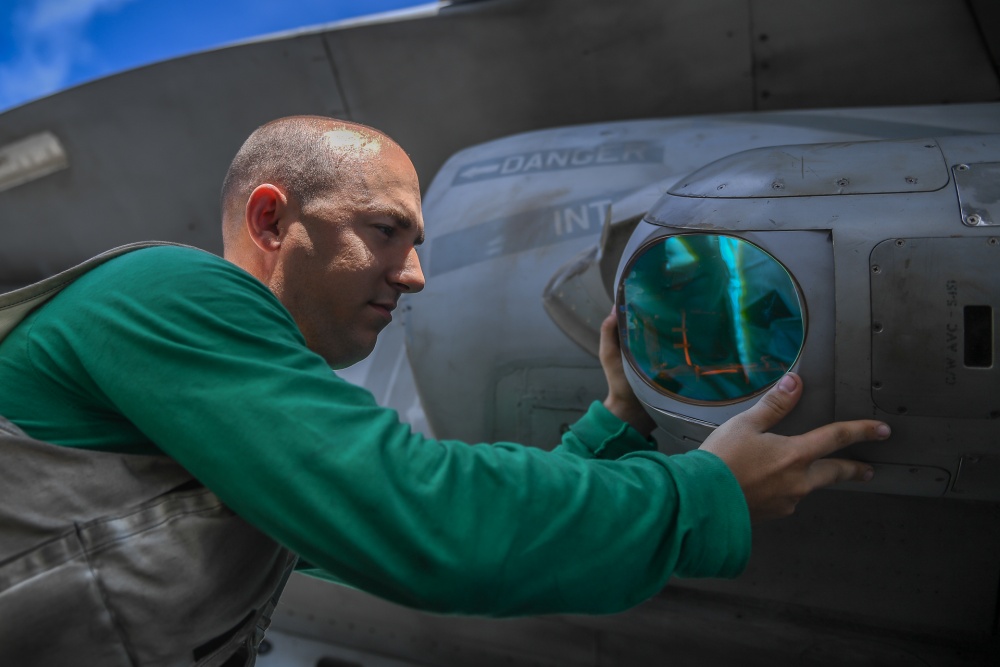The US Navy (USN) is soliciting options to improve or replace the electro-optic/infrared (EO/IR) air-to-air and air-to-surface targeting pods on its Boeing F/A-18E/F Super Hornets and EA-18G Growlers.
The move comes amid concern about the current hardware's readiness state and sustainment cost.
The service is looking at systems currently fielded on US tactical strike or fighter aircraft to improve or replace the existing Raytheon-made Advanced Targeting Forward Looking Infrared (ATFLIR) pod inventory, it says in a request for information posted online. Potential bidders must have an active production line, or the ability to establish one with limited startup costs, and capacity to support production of 250 pods between fiscal years 2022 and FY2029, says the USN.
“The government does not presently intend to award a contract, but wants to obtain technical capabilities, system sustainment and supportability philosophies, pricing, schedule and other market information for planning purposes,” says Naval Air Systems Command (NAVAIR) in its post. “Information provided via this request will be used to evaluate and assess the feasibility, complexity and affordability of a replacement EO/IR targeting pod to support an initial fielding of (calendar year) 2023.”

A US Marine examines Raytheon ATFLIR pod
US Navy
The USN wants a pod that will last until the end of the F/A-18E/F’s projected service life, which it figures is 2045. The service says each pod will likely be used an average of 660h annually.
The service does not say specifically what is expected to degrade the readiness of the ATFLIR pods or what could cause the system’s sustainment costs to increase.
The ATFLIR’s sensors identify and track ground or air targets, and can guide weapons in light or dark conditions. Raytheon says the system can locate and designate targets at ranges exceeding 40nm (74km) and at altitudes above 50,000ft.
Source: FlightGlobal.com


























